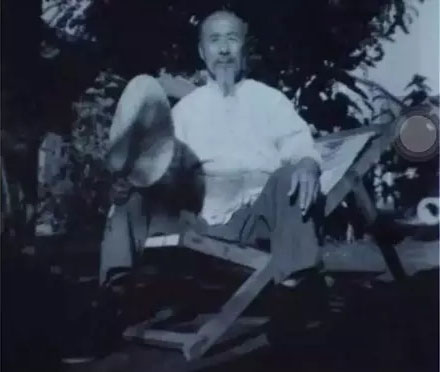
The “playing boxing” of Wudang Zhaobao Tai Chi is the characteristic of Zhaobao people’s boxing practice. As the name suggests, “playing boxing” means practicing boxing with a game or playful mentality. Zhaobao Tai Chi calls boxing practice “playing boxing”. Wudang Tai Chi is profound and difficult to learn. It is like a cliff that is unreachable and unfathomable. It uses the theory of “playing boxing” to lead people to get started.
Why is Tai Chi Kung Fu called “playing boxing”? “Playing boxing” is natural, light, and soft, like a gentle breeze and drizzle, a sunny March; like children playing and playing naturally. There is no intention of being deliberately artificial or mysterious, and the movements do not use strong and powerful strength. Wudang Zhaobao Tai Chi is just to be soft with slowness and to be alive with softness; to shake it gently to loosen its shoulders, and to be soft with it to live its waist. The softest and the strongest, refine the soft into hardness.
“Playing boxing” is to adopt the mentality of children playing, to focus on practicing qi in a carefree, relaxed, and unrestrained state, and to obtain the true meaning of Tai Chi with innocence and worry-freeness. This spirit of “playing boxing” conforms to Lao Tzu’s Taoism of following nature and doing nothing. “Playing boxing” is the inaction of the mind in practicing Taoism, a natural movement that returns to a harmonious unity. “Playing boxing” seems more accurate than “practicing boxing” and “practicing qigong”, and is more in line with the inaction of the mind. “Playing boxing” is simple and unpretentious, extraordinary and unworldly, seeking truth and inaction from nature, and it is the simplest and easiest truth.
When I first came into contact with Zhaobao Tai Chi, I heard the teacher say that practicing boxing should be like “playing”, the mind should be relaxed, the movements should be coordinated, the whole body should be easy-going, and light and natural, that is, the mentality of “playing boxing” should be used to practice qigong. The meaning of “playing boxing” here refers to the Taoism of Laozi and the unity of man and nature in Tai Chi. The heaven and the earth are round and vague, and people are also round when practicing Tai Chi; just as the heaven and the earth are round, the human body is round everywhere. There are three straight lines between heaven and earth, namely up, middle and down, and there are three straight lines in the human body, namely the head, body and legs. There are four smooth lines between heaven and earth, namely cold, warm, hot and cool, and there are four smooth lines in the human body, namely the hands, body, legs and feet. There are six harmonies in heaven and earth, namely up and down and four directions, namely east, west, south and north, and there are six harmonies in the human body, namely the hands, feet, elbows, knees, arms and hips. There are four major festivals in heaven and earth, namely spring, summer, autumn and winter, and there are four major festivals in the human body, namely the two arms and two hips. There are eight sub-sections in heaven and earth, namely the beginning of spring, summer, autumn and winter; the two equinoxes are the spring equinox and autumn equinox, and the two solstices are the summer solstice and the winter solstice. There are also eight sub-sections in the human body, namely the two hands, two elbows, two knees and two hips.
Harmony between man and nature is the unity of the human body and the natural celestial bodies, that is, when practicing Tai Chi, one merges oneself with the universe. The postures of Tai Chi imitate the basic laws of nature. The unity of man and nature in Tai Chi is the experience accumulated by the masters of Zhaobao Tai Chi from all generations, and the practice of Taoism.
“Playing the boxing” is the name used by several generations of masters of Wudang Zhaobao Tai Chi, which shows the importance of its method. As early as the eighth generation of Wudang Zhaobao Tai Chi, He Zhaoyuan created the formula of “playing the boxing” to facilitate the learning of boxing by future generations. The ninth generation of He Qingxi wrote the “playing the boxing” explanation. The tenth generation teacher Zheng Wuqing has a more insightful description of “playing the boxing”.
